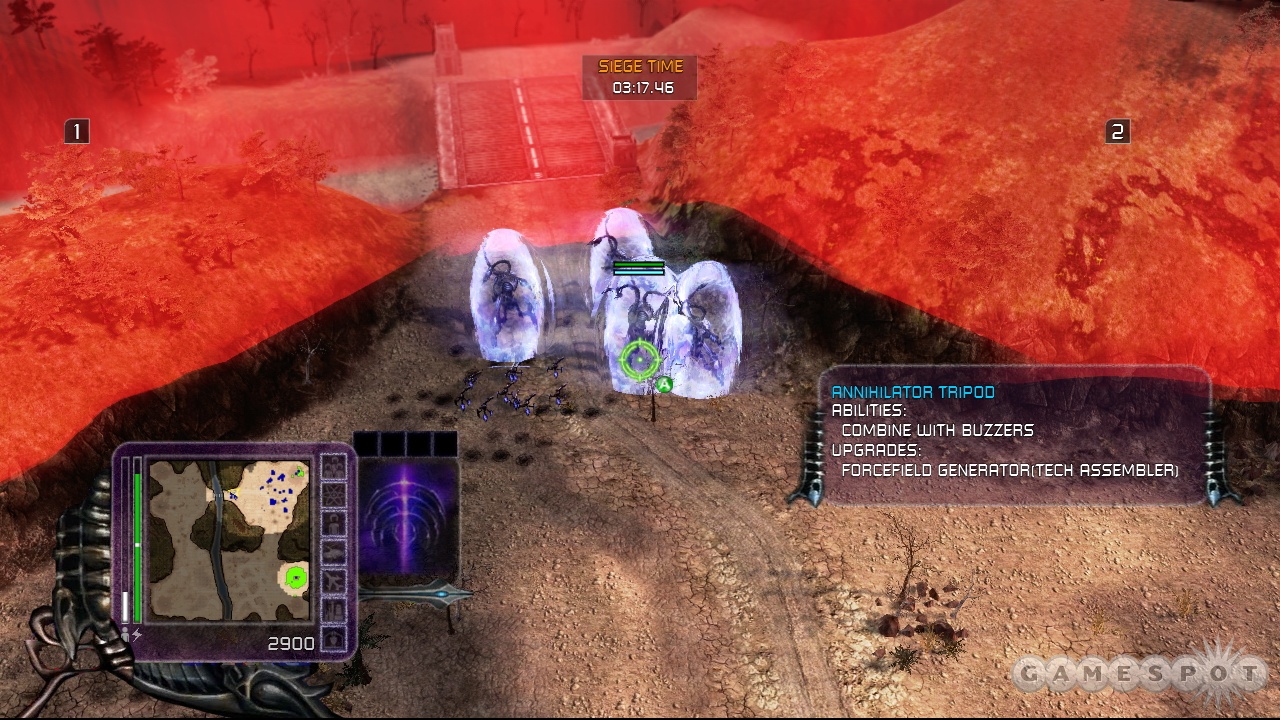Command & Conquer 3 Tiberium Wars Multiplayer Hands-on
Get the details on the five multiplayer modes that will ship with this upcoming real-time strategy game for the Xbox 360.
Conventional wisdom for many years was that real-time strategy games such as Command & Conquer were the domain of the PC, mainly because their intricate controls made them difficult to play with a console gamepad. Then last year, EA released The Lord of the Rings, The Battle for Middle-earth II for the Xbox 360 and showed how it's possible to design and make an RTS game that plays well on both the PC and the console. In many ways, Battle for Middle-earth II served as a prototype for what EA had on slate next: Command & Conquer 3 Tiberium Wars, the latest in the long-running RTS series. Tiberium Wars shipped for the PC in March, and the release of the Xbox 360 version is due next week.

While we can expect the Xbox 360 version's single-player campaign to be identical to the one found in the PC version, the multiplayer portion of the game is considerably different. That's partly because the scale of the PC's multiplayer modes (which support up to eight players) are too large for the Xbox 360. However, while the PC version only featured one mode, the Xbox 360 version will feature five. Not surprisingly, EALA turned to Battle for Middle-earth II for Tiberium Wars' multiplayer, as there are some familiar modes here.
Tiberium Wars will support up to four players on Xbox Live in both ranked and unranked games, and there's support for the Xbox Live Vision Cam, so it's possible to see the faces of your opponents in a corner window of the screen while you play. There are approximately 20 multiplayer maps, some designed with one-versus-one bouts and others that support up to four players that can be played in a free-for-all or in team modes. These maps cover a variety of environments, and for the most part, they're symmetrical in nature to create as level a playing field as possible. The one exception to this is the map that's literally called "unfair advantage," and it places most players a fair distance away from their starting tiberium fields, which has a big impact on gameplay. Not only does it take a lot longer to gather the key resource tiberium, but it also means that the vulnerable harvesters have to traverse a fair distance away from the safety of their bases.
The most basic mode is versus, which can be played as a one-on-one, two-on-two, or one-on-three mode, or as a free-for-all. The goal is simple: Destroy the enemy to win. Versus mode is good for all-out carnage, and it's comparatively uncomplicated. Things get interesting with the remaining four modes, however. King of the hill is a mode that's taken out of Battle for Middle-earth II. To win, you have to seize and hold a central tower for a certain amount of time. This can create a wild game as players desperately launch attacks or counterattacks to hold the tower. The danger is that if you exhaust yourself in the effort to capture the tower, you're vulnerable to someone taking it from you moments later. This is true particularly in a three- or four-player game; one player will defend the tower, another will exhaust all his forces to evict him, and then another will knock off any survivors and claim the tower for himself.
Then there's capture and hold, which is similar to king of the hill, but now there are multiple capture areas on the map. Holding a single area accumulates you points, while capturing multiple areas accumulates points that much faster. The victor is the player who reaches the predetermined victory point total first. Since there are multiple capture points on the map, this poses many questions. Do you spread your forces and try and capture and hold all the areas? Do you concentrate on a single area? Does the enemy have the point lead, and, if so, what do you need to do to catch up?
Capture the flag is a mode that's usually seen in first-person shooters, but it's also one of the modes in Tiberium Wars. There's a flag in the middle of the map, and the goal is to send forces to capture it and then return it to your base successfully. The winner is the player who can capture the flag the required number of times, so it'll be possible to fall behind in this game and come back.

The final mode is called siege, and it's a variation of versus mode. The key difference is that siege is designed to prevent what's called "rushing," or the tactic some players use to win a game in the very beginning by quickly building lots of cheap units and overwhelming their opponents, who are usually not prepared for an early encounter. Siege cordons off all players with an energy barrier that prevents them from leaving the starting area. The energy barrier lasts for a predetermined amount of time, such as three or five minutes, or longer. This gives you enough time to establish your base and your economy without having to worry about a surprise early attack.
With Battle for Middle-earth II, EA proved it was possible to have competitive real-time strategy multiplayer on a console, and judging from Tiberium Wars, there wasn't a lot of need to fix things that clearly were not broken.
Got a news tip or want to contact us directly? Email news@gamespot.com
Join the conversation